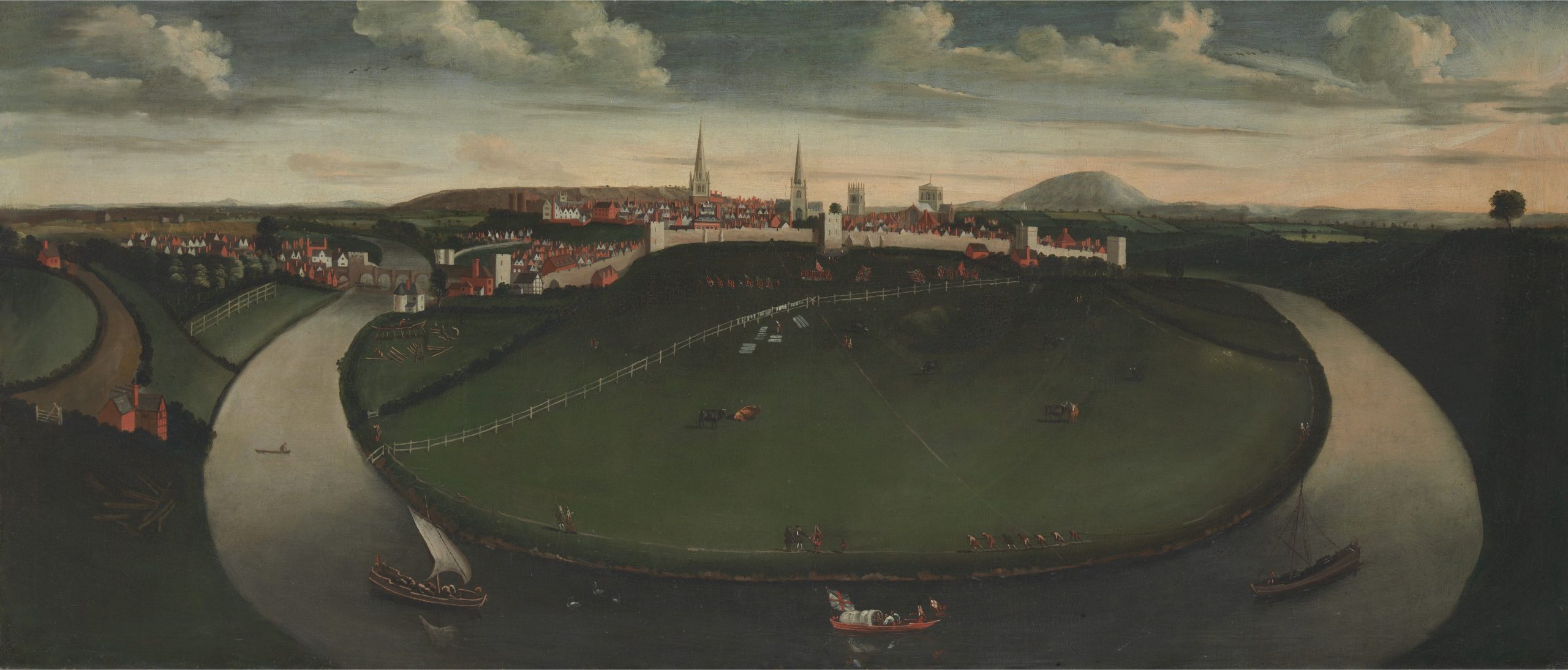Three pictures from the Yale Center for British Art showing panoramas of Shrewsbury reveal how quickly the town changed in the early 18th century. (Click on the carousel images above to see a full size version).
Panoramas of Shrewsbury in 1720
Two paintings by an unknown artist show panoramas of Shrewsbury in 1720.
One is a view of the town from the northeast, with Shrewsbury Abbey visible outside the loop of the river on the left. The town walls surround the town and Shrewsbury Castle stands on its hilltop to the right.

The other painting shows the town from the opposite direction, with a view of the Quarry park on the southwest side of town. Shrewsbury Castle can be seen on the left, behind the houses. The town walls have a series of battlemented towers, only one of which remains in place today. Several different activities are going on in the Quarry. Boats are being built to the left of the picture, laundry is being hung out to dry at the centre, cattle are grazing, and soldiers are training under the town walls. A team of people on the riverbank are pulling a boat upstream.

Panorama of Shrewsbury in 1732
A print showing a similar view of Shrewsbury from the southwest in 1732 shows a larger town with some significant changes. The engraving was created by the brothers Samuel and Nathaniel Buck. The Buck brothers spent more than 30 years travelling around England and Wales, producing engravings of historic buildings, towns, and cities.
Much of the town remains unchanged since the previous picture. The same church spires are still visible over the houses: St Mary’s, St Alkmund’s, and St Julian’s, as well as Old St Chad’s. The same large inn stands by the road on the opposite side of the river, where the Boathouse pub still exists today. Another boat is being pulled up the river and there are a couple of small, round coracles in the water. However, the Quarry has become a landscaped park, with a lime tree avenue leading up to a new gateway through the town walls.

The town shown in these 18th century Shrewsbury panoramas is still recognisable today. Old St Chad’s has collapsed and been replaced, the Quarry has been filled with flowers (the small hollow that became the Dingle is clearly visible in the Buck brothers’ engraving and can be seen in the earlier painting), and the town has expanded on all sides. The town walls are no longer standing, apart from one tower, and the Welsh bridge has been replaced without the turret. However, the river loop surrounding the town centre and the three spires of St Mary’s, St Alkmund’s, and St Julian’s are still there.


